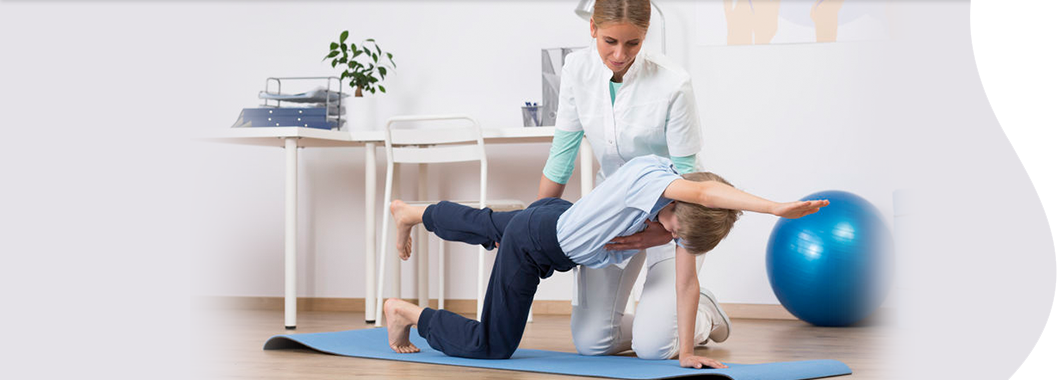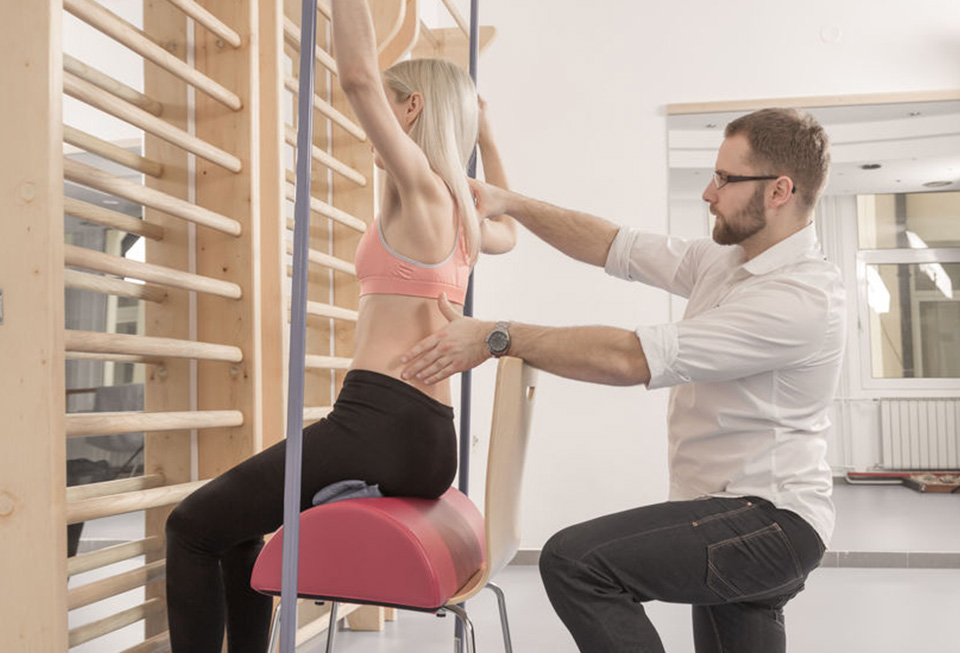The Schroth Method is a nonsurgical physical therapy approach to scoliosis treatment that uses the power of breathing techniques, muscle synergy, stretching, posture, and education to reduce the severity of idiopathic scoliosis curves. Exercises rotate, elongate, and stabilize the spine to return it to a healthy shape and position.
Keep reading for more information about the treatment, how it works, and what outcomes to expect.
What Is Schroth Therapy?
Schroth therapy is an exercise-based physical therapy modality designed to treat adolescent scoliosis. Based on the work of Katharina Schroth, a German physical therapist who developed the method in 1919, the therapy involves specific exercises and postures designed to reduce the curvature of the spine and improve breathing.
In Schroth therapy, the patient performs a series of exercises that gradually increase in difficulty. The exercises promote flexibility, strength, and posture. They also help improve core stability and balance. As the patient progresses, they will begin to focus on specific positions that help correct their curvature.
Schroth therapy is a conservative, non-invasive treatment option for scoliosis. It does not involve the use of braces, casting, or surgery, and can be used in conjunction with other treatments. The goal of Schroth therapy is to improve the patient’s quality of life and reduce pain.
Schroth therapy can be a preventative measure for patients at risk of developing scoliosis. Or, it can be a corrective measure for those with existing curvature. Patients usually require several weeks or months of practice to achieve desired results and may need to continue with the therapy for a period of time to maintain the effects.
How Effective Is Schroth Therapy for Scoliosis?
The effectiveness of Schroth therapy has been studied in multiple clinical trials. Results have found that patients who progressed through the program showed improvements in Cobb angles, a measure of scoliosis curvature. In some cases, the improvements were sustained for several years after the completion of the program.
Studies have also shown that Schroth therapy can help reduce pain, improve range of motion, and improve overall quality of life. The treatment is safe and well-tolerated by most patients, making it a viable option for many adolescents with scoliosis.
As far as actual numbers go, a 2017 SOSORT Award-winning study published by Biomed Central found that 69% of patients who were compliant with Schroth Therapy stopped the progression of their scoliosis, while the remaining 31% improved. None of the patients showed any worsening of their condition.
Other pieces of research have found that Schroth therapy can be effective in reducing Cobb angles of scoliosis of 40 degrees or higher.
Results from Schroth therapy may vary from patient to patient depending on the severity of their curvature and other factors such as age, gender, and duration of treatment. Generally speaking, patients who are committed to the program and practice consistently can expect to see improvements in their condition within five to 20 sessions.
3 Components of Schroth Therapy for Scoliosis
Schroth therapy consists of three main components that work together to improve spine curvature and posture.
Muscular Symmetry
The first component of Schroth therapy is muscular symmetry. An abnormal spine curvature invariably affects the back muscles as well. Muscles on one side may weaken while the muscles on the other side become overworked. Schroth exercises effectively address this, aiming to achieve muscular symmetry.
Exercises are performed to strengthen and balance the muscles on both sides of the body, helping to evenly distribute the weight and pressure along the spine. Muscular symmetry can be achieved through a variety of activities such as squats, planks, and leg lifts. Many Schroth treatments will require patients to use a therapy table, wall bars, or other equipment to properly execute the exercises. They are performed on a regular basis, usually 2-3 times a week.
Rotational Angular Breathing
The second component of Schroth therapy is rotational angular breathing. Asymmetrical body structure causes a distorted breathing pattern which may also further the cycle of curvature and rotation. This important component of Schroth therapy helps rotate the spine and reshape the rib cage and surrounding soft tissue. It also helps to reduce muscular tension along the spine.
Rotational angular breathing involves deep breaths that are taken into the concave side of the body. During inhalation, patients focus on expanding collapsed areas, and during exhalation, they contract their core muscles to stabilize the surrounding muscle structure.
Awareness of Posture
Posture awareness is another important part of Schroth therapy. Patients are trained to develop a self-awareness of their body in space, how they may be holding their bodies incorrectly, and how to properly adjust their posture. Common postural mistakes include rounding of the shoulders or slouching, and leaning to one side. By developing a better awareness of their posture, patients reduce the strain on their spine and help improve curvature.
Examples of Schroth Therapy Exercises
Patients may learn a range of exercises and techniques during Schroth therapy. While all exercises are designed to promote proper curvature, they can vary depending on an individual’s abilities and needs. Below are a few examples of the most commonly used exercises in Schroth therapy.
Prone On Stool:
This exercise is designed to improve the curvature of the spine and strengthen the muscles in the thoracic area, or the upper and middle back. The patient lies on a stool with their hips and shoulders aligned in a neutral position, then lifts their chest up to increase the spinal curvature. With repeated practice, this can help to improve posture and reduce pain.
Semi-Hanging:
Semi-hanging exercises involve hanging from a bar with the hands and toes in contact with the floor. This helps to stretch out the spine, which can help reduce back pain, as well as strengthens the muscles of the core and thoracic area.
Wall Angels:
The patient stands with their back against a wall and feet hip-width apart. Keeping the arms close to the body, they slowly raise them up in a controlled manner, and then slowly lower them back down. This exercise helps to improve shoulder positioning, increase range of motion, and strengthen the muscles in the back and shoulders.
Cat/Camel:
This exercise involves rounding and arching the spine in an alternating fashion. While on hands and knees, the patient rounds their back up towards the ceiling and then arches it back down to the starting position. This exercise promotes flexibility in the spine and strengthens core muscles.
Prone Press Up:
Starting in a side-lying position, the patient props themselves up with their elbows and feet on the floor. Then, they press up their upper body, keeping the arms in line with the spine. This exercise strengthens the muscles of the back and improves posture.
Professional Schroth Therapy In NJ
Scoliosis Therapy Centers provides professional Schroth therapy for patients in the New Jersey area. We can work with you to assess your specific condition and develop a tailored plan of action to treat it. Book a consultation today!



